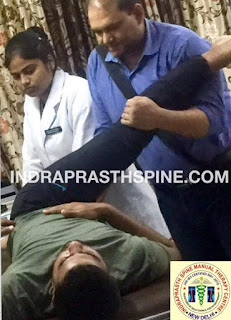Wednesday, 26 September 2018
Monday, 24 September 2018
NUMBNESS IN FOOT
NUMBNESS IN FOOT - Numbness in your foot may be a temporary condition or it can be the result of a chronic condition, such as diabetes. The symptom can also be progressive. You may begin to lose some sensation in your foot then slowly lose more and more feeling as time goes on.The chief symptom for numbness in your foot is losing sensation in your foot. This affects your sense of touch and balance because you can’t feel your foot’s position against the ground.
While sensation loss is the main symptom of numbness in your foot, you may experience some additional, abnormal sensations.
These include:
- prickling
- pins-and-needles sensation
- tingling
- weak-feeling foot or feet
Contact us at 011-45656944, 9868328426
While sensation loss is the main symptom of numbness in your foot, you may experience some additional, abnormal sensations.
These include:
- prickling
- pins-and-needles sensation
- tingling
- weak-feeling foot or feet
Contact us at 011-45656944, 9868328426
Thursday, 20 September 2018
NOCTURNAL LEG CRAMPS
NOCTURNAL LEG CRAMPS - Nocturnal leg cramps are pains that occur in the legs during the night. They usually cause awakenings from sleep, but they may also occur while awake at night during periods of inactivity. These cramps mostly happen in the calf muscles but can also occur in the thighs or feet. Nocturnal leg cramps are quite painful and cause the affected muscles to feel tight or knotted. Symptoms may last from several seconds up to several minutes. There might also be muscle soreness after the cramp goes away. Nocturnal leg cramps are more common in adults over age 50, but they also do occur in younger adults and children. Both men and women seem to be equally affected.
The cause of nocturnal leg cramps is often times unknown, but some cases have been linked to:
- Sitting for long periods of time
- Over-exertion of the muscles
- Standing or working on concrete floors
- Sitting improperly
Tuesday, 4 September 2018
SCOLIOSIS SIGN & SYMPTOMS
Scoliosis is a sideways curvature of the spine that occurs most often during the growth spurt just before puberty. While scoliosis can be caused by conditions such as cerebral palsy and muscular dystrophy, the cause of most scoliosis is unknown. Most cases of scoliosis are mild, but some children develop spine deformities that continue to get more severe as they grow. Severe scoliosis can be disabling. An especially severe spinal curve can reduce the amount of space within the chest, making it difficult for the lungs to function properly
Signs and symptoms of scoliosis may include:
- Uneven shoulders
- One shoulder blade that appears more prominent than the other
- Uneven waist
- One hip higher than the other
Monday, 3 September 2018
SPONDYLOLISTHESIS
Spondylolysis is a crack or stress fracture in one of the vertebrae, the small bones that make up the spinal column. The injury most often occurs in children and adolescents who participate in sports that involve repeated stress on the lower back, such as gymnastics, football, and weight lifting. In some cases, the stress fracture weakens the bone so much that it is unable to maintain its proper position in the spine—and the vertebra starts to shift or slip out of place. This condition is called spondylolisthesis. In spondylolisthesis, the fractured pars interarticularis separates, allowing the injured vertebra to shift or slip forward on the vertebra directly below it. In children and adolescents, this slippage most often occurs during periods of rapid growth—such as an adolescent growth spurt.
Subscribe to:
Comments (Atom)






